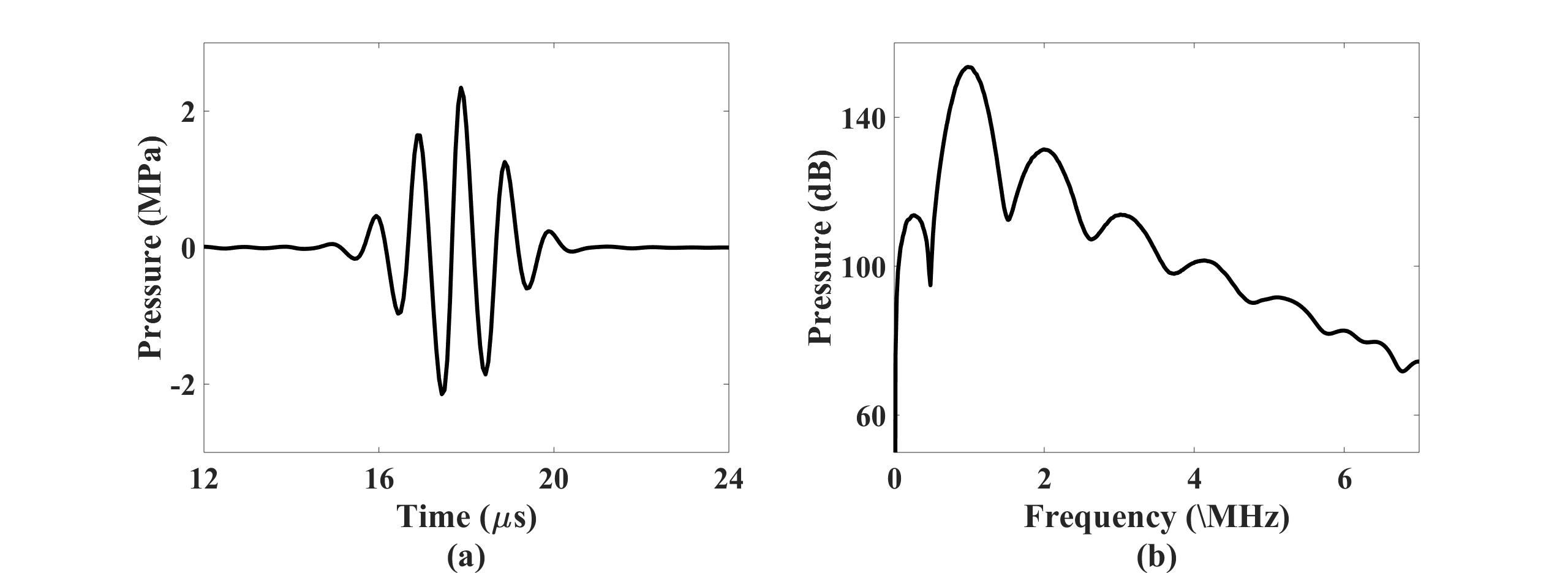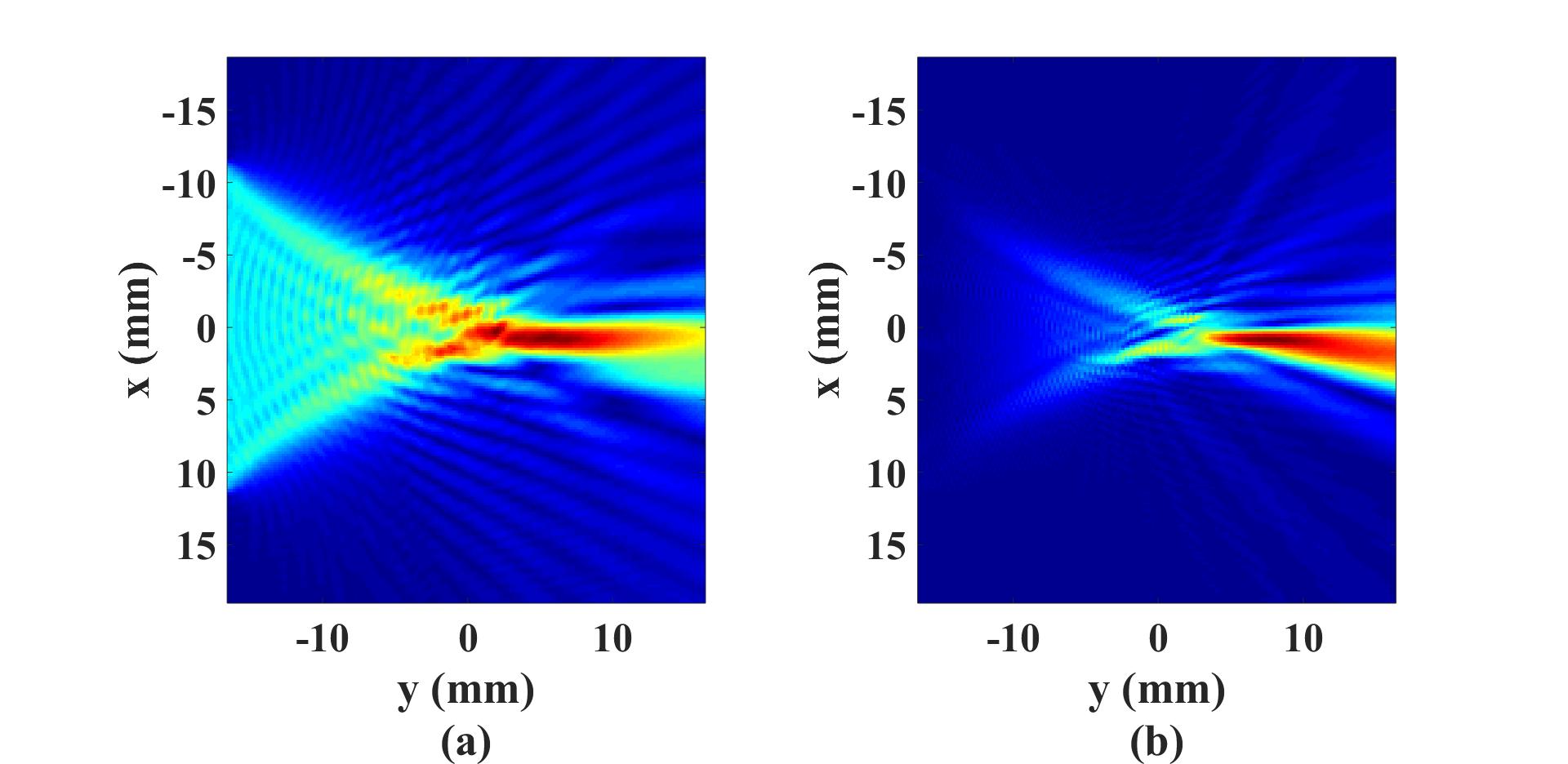Simulation of a 2D heterogeneous medium using the transient mixed domain method
This example demonstrates how to use the transient mixed domain method for simulating wave propagation in 2D heterogeneous media.
Defining the medium properties
The setup of the computational domain and transducer in this example is similar to that in
Simulation of a
2D homogeneous medium using the transient mixed domain method.
All relevant acoustical properties including the speed of sound, density, nonlinearity coefficient, attenuation coefficient and power
law exponent can vary in space in order to model truly heterogeneous media. medium.c0
is defined as the minimum value in the
medium.c.
The 2D tissue model used in this example is shown in the figure below.
The red line on the left boundary indicates the array position. The red dot is the geometrical focus.
p0 = 1.0e6; % source pressure magnitude [Pa]
fc = 1.0e6; % fundamental frequency [Hz]
TR_focus = 0.0210; % transducer focal length [m]
TR_radius = 0.0112; % Transducer radius [m]
load tissue_model.mat % load the tissue model data
medium.c = c; % speed of sound [m/s]
medium.rho = rho; % density [kg/m^3]
medium.beta = beta; % nonlinearity coefficient
medium.ca = ca; % attenuation coefficient [dB/(MHz^y cm)]
medium.cb = cb; % power law exponent
medium.c0 = min(min(c)); % reference speed of sound [m/s]
medium.NRL_gamma = 0.5;
medium.NRL_alpha = 0.05;

2D forward simulation
The acoustic pressure field is calculated with the 2D forward simulation function Forward2D.
% define where the pressure will be recorded
sensor_mask = zeros(mgrid.num_x, mgrid.num_y+1);
sensor_mask(100:300, 2:end) = 1;
% the maximum order of reflection included in the simulation
reflection_order = 2;
% 2D forward simulation
p_total = Forward2D(mgrid, medium, source_p, sensor_mask, reflection_order, 'NRL');
The acoustic signal recorded at the transducer focus as well as its Fourier components are shown in the top two figures
shown below. Acoustic pressure fields at the fundamental and the second-harmonic frequencies are shown in the bottom two figures.


Other examples
·
Simulation of a 2D homogeneous medium using the transient mixed domain method
·
Simulation of a 2D heterogeneous medium using the transient mixed domain method
·
Simulation of a strongly 2D heterogeneous medium using the transient mixed domain method
·
Simulation of a 3D homogeneous medium using the transient mixed domain method
·
Selecting the proper temporal domain size for the TMDM
·
Shock wave simulations with TMDM
·
Simulation of a 2D homogeneous medium using the frequency-specific mixed domain method
·
Simulation of a 2D heterogeneous medium using the frequency-specific mixed domain method
·
Simulation of a 3D homogeneous medium using the frequency-specific mixed domain method
·
Simulation of a 3D heterogeneous medium using the frequency-specific mixed domain method
·
Reducing the spatial aliasing error using the non-reflecting layer
·
Comparing pressure release and rigid boundary conditions
·
Image reconstruction using backward projection
·
Reconstruction of the source pressure distribution with FSMDM in a 3D homogeneous medium
·
Integrating mSOUND with k-Wave for transducers of arbitrary shape
·
Integrating mSOUND with FOCUS for transducers of arbitrary shape
·
Integrating mSOUND with k-Wave for thermal simulations
